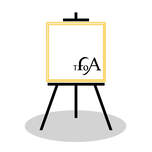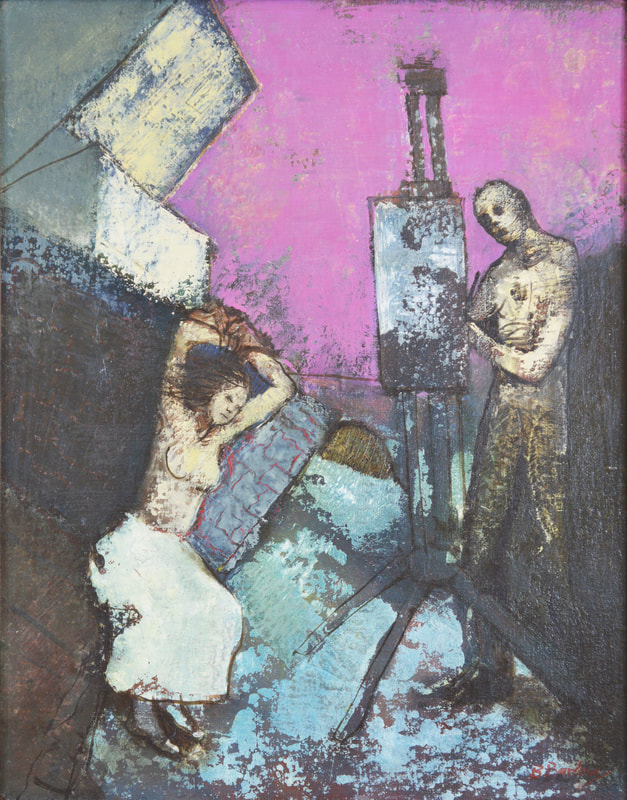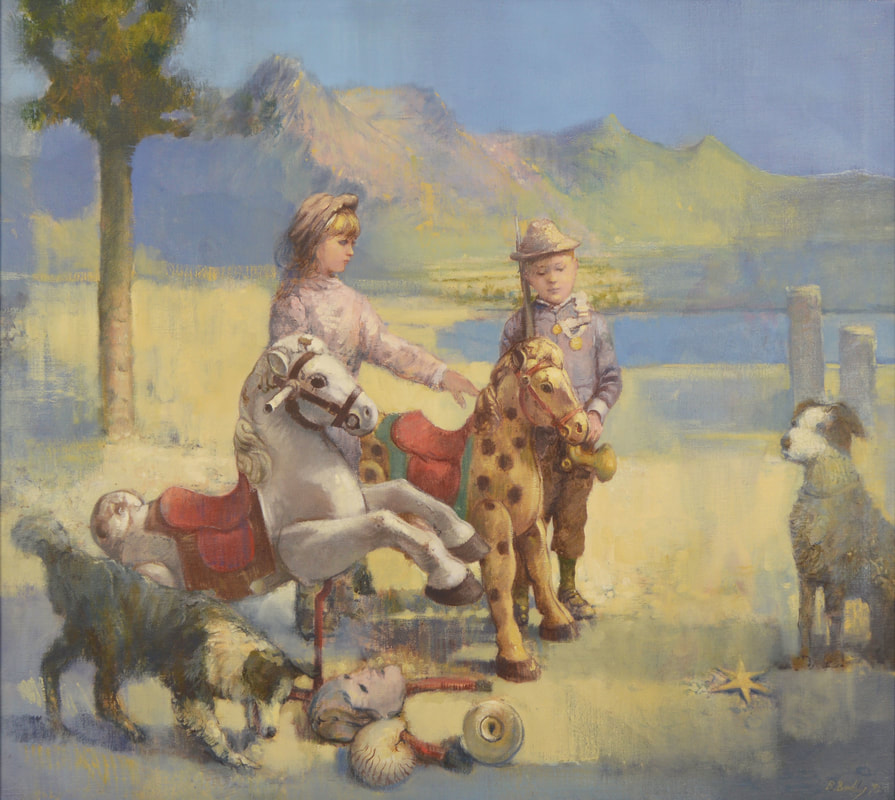Bohuslav Barlow
Biography
Bohuslav Barlow was born as Bohuslav Klos in Bruntal, a small peasant township in Upper Moravia, Czechoslovakia, in 1947.
Bohuslav's family fled Czechoslovakia while he was a baby as The Iron Curtain descended; for Furstenfeldbruk near Munich. Soon after this his mother moved to England to obtain work, leaving Bohuslav in the care of his grandparents. While spending his early years in Bavaria he gained two prevailing memories. The first of which was looking up at the high baroque ceiling in Furstenfeldbruk Church while singing the Catholic chants, and admiring the glorious angels and fat-bottomed putti as they swirled around in a complex design of whites and golds. The second memory was of his home in late summer, aflame with poppies and with a distant view of the Bavarian Alps far beyond. Although his first memory is of Catholic imagery you will not find any in his mature work unlike flowers from his second memory which is recurring even in his most recent pictures.
At 8 years old, Bohuslav was summoned to England to his mother and stepfather (from whom he took the surname Barlow) in Blackpool. Understandably, it took time to adjust and settle in England; which was made worse by the suspicion in which people from Germany were regarded so soon after the end of WWII. But it was during Bohuslav's early years in England that he began to express himself through art. His first picture was a view of the famous Blackpool Tower. He then progressed to copying film posters and gradually moved onto better things; which were often linked to an imaginary world that he told his step siblings stories about.
The discovery of his profession as an artist was slow and torturous; due to his family's extreme poverty, Bohuslav's early pictures were done in pencil and coloured crayons on cheap paper.
When he reached Manchester School of Art it gave him the opportunity to use oil paints for the first time. From here, he then went onto the Central School of Art in London in the grip of hard edge abstractionism; which was contrary to his own instincts. He taught for one term in London and from then on decided to live as a full time professional artist which he has done ever since.
Bohuslav's family fled Czechoslovakia while he was a baby as The Iron Curtain descended; for Furstenfeldbruk near Munich. Soon after this his mother moved to England to obtain work, leaving Bohuslav in the care of his grandparents. While spending his early years in Bavaria he gained two prevailing memories. The first of which was looking up at the high baroque ceiling in Furstenfeldbruk Church while singing the Catholic chants, and admiring the glorious angels and fat-bottomed putti as they swirled around in a complex design of whites and golds. The second memory was of his home in late summer, aflame with poppies and with a distant view of the Bavarian Alps far beyond. Although his first memory is of Catholic imagery you will not find any in his mature work unlike flowers from his second memory which is recurring even in his most recent pictures.
At 8 years old, Bohuslav was summoned to England to his mother and stepfather (from whom he took the surname Barlow) in Blackpool. Understandably, it took time to adjust and settle in England; which was made worse by the suspicion in which people from Germany were regarded so soon after the end of WWII. But it was during Bohuslav's early years in England that he began to express himself through art. His first picture was a view of the famous Blackpool Tower. He then progressed to copying film posters and gradually moved onto better things; which were often linked to an imaginary world that he told his step siblings stories about.
The discovery of his profession as an artist was slow and torturous; due to his family's extreme poverty, Bohuslav's early pictures were done in pencil and coloured crayons on cheap paper.
When he reached Manchester School of Art it gave him the opportunity to use oil paints for the first time. From here, he then went onto the Central School of Art in London in the grip of hard edge abstractionism; which was contrary to his own instincts. He taught for one term in London and from then on decided to live as a full time professional artist which he has done ever since.






